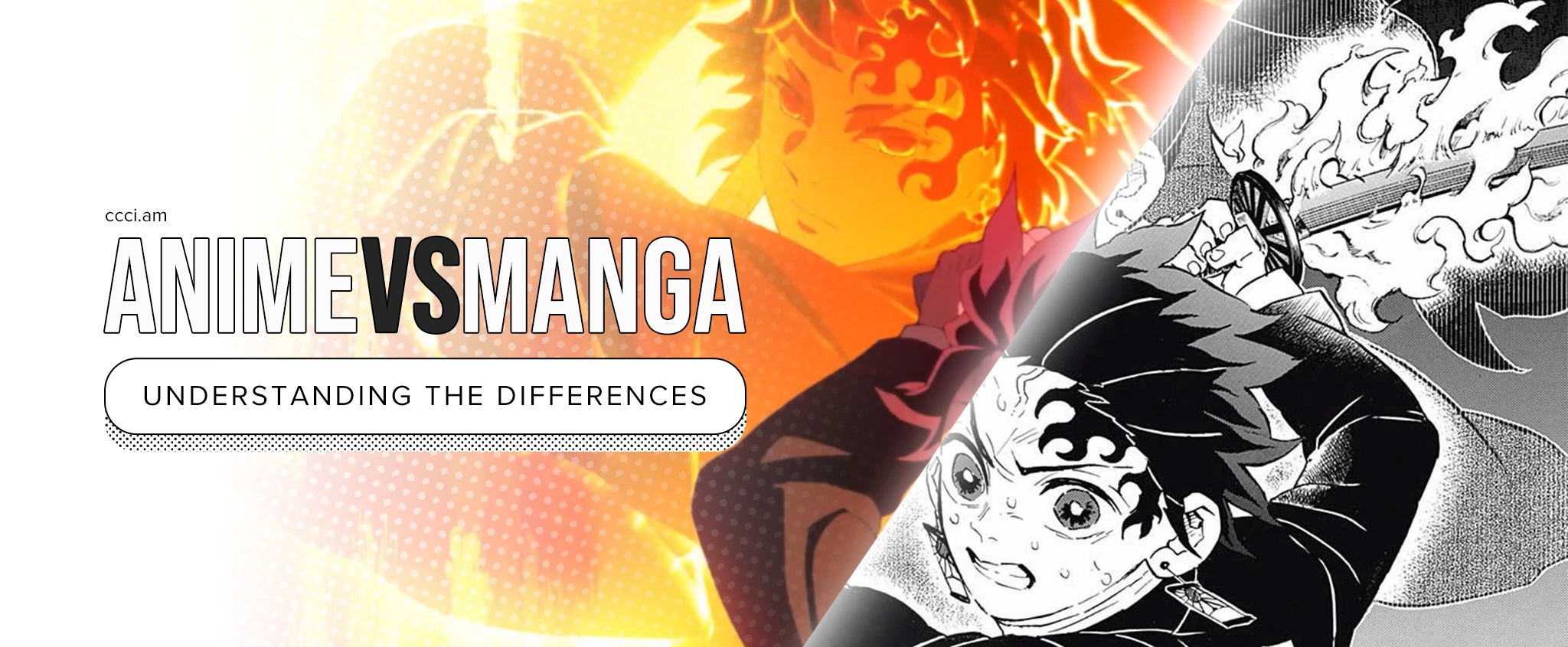The Art of Comics, Manga, and Anime
Comics, manga, and anime are three of the most popular art forms in the contemporary world. In this article, we will try to explore their origins and definitions, as well as try to differentiate them from one another as interrelated as they may be. We will also look into how they have developed commercially amid globalization and the dawn of the internet.
What Is Comics?

When we hear the term comics, Marvel, DC, and (for millennials) Archie easily come to mind. These are some of the publishers or series that have dominated the comics scene, especially in the 21st century.
Comics is defined as an art form or a medium that tells a story or ideas using a series of still images normally accompanied by text. It is usually arranged in panels also known as a comic strip. In the western world, they appeared initially in newspapers, magazines, and eventually, thin periodicals called comic books. The term evidently derives from comic, which means humorous, as it was in early American newspaper comic strips, but has been adopted by similar, non-humorous works too. Other cultures, including Russian (Комикс) and German (comic), have also utilized the term to refer to their locally produced works.
Popular western comics such as Marvel and DC have not only led the comics scene but also the film industry. It is thanks to these comic book adaptations that we have worldwide blockbuster films and series such as Avengers, Black Panther, Iron Man, Captain America, Aquaman, Spider-Man, The Dark Knight Rises, Joker, and many more.
What Is Manga?

Japanese comics, which have independently flourished from the western world, are called manga (漫画), first coined in 1798. Composed of the two kanji, it can be literally translated as “whimsical or impromptu” for 漫 (man), and “pictures” for 画 (ga). Albeit having a long history attributed to earlier Japanese art, modern manga art utilizes a style that was cemented in the late 19th century.
Manga has become globally recognized as a counterpart of western comics in the eastern part of the world in part due to its strong national popularity in Japan. Everyone in Japan, whether young or old, read manga. In buses, trains, cafes, it is typical to find students and businessmen alike reading manga or Japanese comic books. Having profound themes and a variety of genres, manga is one of Japan’s (if not, the) most popular forms of entertainment and literature and is widely available through bookshops and convenience stores across the country. This popularity has given birth to manga cafes, in which guests, for a certain fee and limited time, can visit and freely read and browse manga.
Manga has increasingly become a major contributor to the Japanese publishing industry, with annual sales of 1.9 billion manga books and magazines in 1995. Due to its unique and exciting themes, it has undoubtedly also gained a worldwide audience, best typified by Eiichiro Oda’s masterpiece One Piece, which is considered the best-selling manga series in the world with 454 million copies sold globally.
What Is Anime?
(Manga vs Anime)

Anime is a wholly different form of entertainment in comparison to the first two, although it is often confused with manga. Anime comes from the English word “animation,” and alludes to all animated works from Japan. Manga and anime is to Japan as comics and cartoons are to the west, respectively.
Like how it is in western animation studios, anime art involves several production processes such as cel production, designing of the characters, voice acting, etc. Many anime are manga adaptations, although unlike manga, anime incorporates not only visual art but also auditory art (sound and music). Music is as important as visuals in anime, and it has undoubtedly contributed to the success of many classic works, from Hayao Miyazaki’s Studio Ghibli films to Makoto Shinkai’s Your Name.
The art of anime, like manga, has undeniable popularity globally. In the 90s, Dragonball Z and Pokémon have been part of many Asian and western households, and have paved the way for other countries to take notice of Japanese entertainment and culture. The anime industry is estimated to produce global revenue of more than 300 billion dollars by 2018.
Manhwa and Manhua

One cannot speak of comics across cultures without making mention of manhwa and manhua in the east, and bande dessinée in the west.
Equivalent to manga, manhwa is Korean comics, while manhua is Chinese; all three, manga, manhwa, and manhua have the same etymology, meaning “impromptu or whimsical sketches.” While the art of manga tends to be depicted by theatrical expressions and huge eyes, manhua’s and manhwa’s are more often than not realistic in terms of its character’s emotions and physical proportions. As in manga, both also use SFXs (sound effects or sound words) to show dynamics and express intensity in the story. Manga is often printed or released digitally in black and white while manhwa and manhua are usually colorized. Fans of manga may also find it surprising that manhwa is read similarly as in western comics which is left → right and top → bottom; fortunately enough, manhua reading direction is identical to manga’s. It must be noted, however, that many digital eastern comics (as in Webtoon) adopted a vertical layout for limitless scrolling, which apparently expresses and emphasizes the passing of time for the reader.
Bande Dessinée
Comics have developed independently in Francophone countries especially in France and Belgium under the name bande dessinée (abbreviated “BD”), which literally means “drawn strips.” First coined in the 1930s but popularized in the 60s, BDs enjoy a significant readership base in Belgium and France where it is considered the ninth art (le neuvième art), after architecture, sculpture, painting, music, dance, poetry, film, and television.
Bande dessinee has also spread across Europe and the world and localized into several European languages. From 1981-1989, a Belgian BD The Smurfs (Les Schtroumpfs) made its way to North America as a television cartoon series. Additionally, the same comics reached global popularity in 2011 when it was adapted into a major motion picture by Sony.
Rise of Globalization, Digitalization, and Localization
Comics, manga, anime, manhwa, manhua, and bande dessinée have all seen growth in popularity over the past few decades owing to rapid globalization and the dawn of the internet. Huge manga, anime, and comic publishers like VIZ Media and Marvel have adapted to the changing times and released works digitally on their own websites or via e-marketplaces like Comixology.
As resources have become more available and people across the globe more interconnected, localization and self-publishing have also become more common. Popularization of manga and the internet had given rise, albeit unlicensed and arguably illegal, to scanlation—the scanning of manga and translating the speech bubbles into English for international fans. Fortunately, with the increase of publishers’ and other digital platforms, more content has become legally available to many countries and in different languages. The best examples of this are Webtoon for comics and Netflix for anime.
Webtoon and Netflix
Webtoon was founded in 2004 by Junkoo Kim, a fan of manga and manhwa who at the time was seeing a crash in the manhwa industry in South Korea. He devised a new way to read and appreciate comics on the web by creating a verticalized format which turned out to be effective for readers. More importantly, Webtoon also allows anyone to publish their own works on the site and get paid based on ad revenues, Creator Rewards, and integration of Patreon. To date, Webtoon has released its English, Taiwanese, Thai, Indonesian, Japanese, Spanish, and French language versions.
For anime fans who have struggled to gain access to classic anime series and films, it is almost hard to believe that many of them are now available on today’s one of the world’s most popular entertainment platforms, Netflix. In 2011, VIZ Media announced its more expanded relationship with Netflix as it makes its several most popular anime series available to the American audience through the platform. Netflix, as of October 2020, supports 29 user interface languages.
Future Outlook

With the industry gaining momentum due to digitalization and globalization, it is hard to deny that comics, Japanese manga and anime are here to stay. Many businesses in Japan outside the entertainment industry have even adopted more creative ways to sell their products through marketing with manga. It is safe to say that these art forms have secured their place in the entertainment world. Although many fear the dying of art as technology progresses and times change the landscapes, it is clear that comics, manga, and anime will always adapt and innovate itself, as it always has for several decades now.
With over 10 years of experience in the Japanese game and manga industry and headquarters in Asia and Europe, CCC International (CCCI) is one of the fast-growing localization companies in the world. Having worked with top Japanese game and manga publishers, we are more than ready and adept to assist you with your manga and comics localization, verticalization, and coloring needs. Talk to us today.
Read also – European comics market, manga to read during holidays, and Thailand’s manga industry takes off.






